Lead generation techniques for your website that simply work
In the right hands, your website can become a powerful tool for lead generation. If it’s not purely informational or brand-oriented, there’s a chance you’re missing out on some great opportunities. We've compiled a list of methods that will help you generate more leads through your website. Written by Dawid ZimnyBefore we dive in, we want to highlight the importance of lead generation. According to Marketo (acquired by Adobe), 96% of visitors who come to your website aren’t ready to buy (yet). This means that even the most exquisite website for your business can be virtually useless if it doesn’t generate leads.
Research by HubSpot is a further testament to that claim. For 65% of companies, the biggest marketing challenge lies in generating traffic and leads.
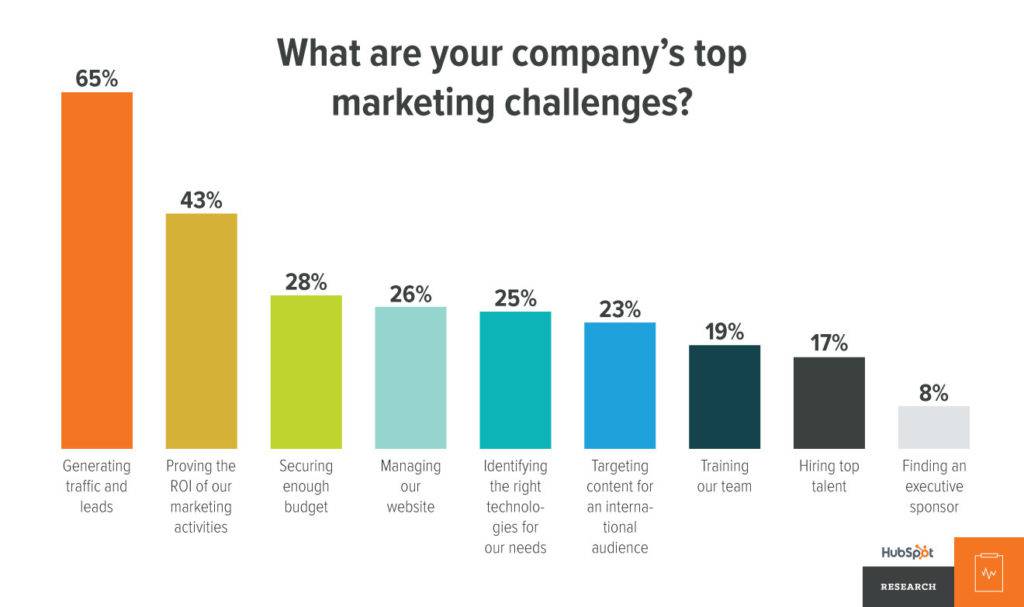
Lead generation methods
The core – contact forms and call to action (CTA) buttons
These two things are at the core of lead generation. You wouldn’t convert any visitors into leads if you didn’t have a contact form to collect their email or personal data. Likewise, nobody will fill out your contact form if it blends with the website instead of standing out with the use of an attention-grabbing CTA.
Generating a lead has two simple steps:
- provide valuable content for your visitors,
- attract their attention to collect their data.
You might ask “how are these steps if the list doesn’t have an order”? It’s because they should work in both ways. Providing content to generate leads and then not nurturing them will get you nowhere, just like attracting visitors’ attention and not rewarding them with the content they were expecting.
There are multiple effective ways to utilize contact forms. OptinMonster sums them up perfectly in a simple graphic showcasing the features of their tool:
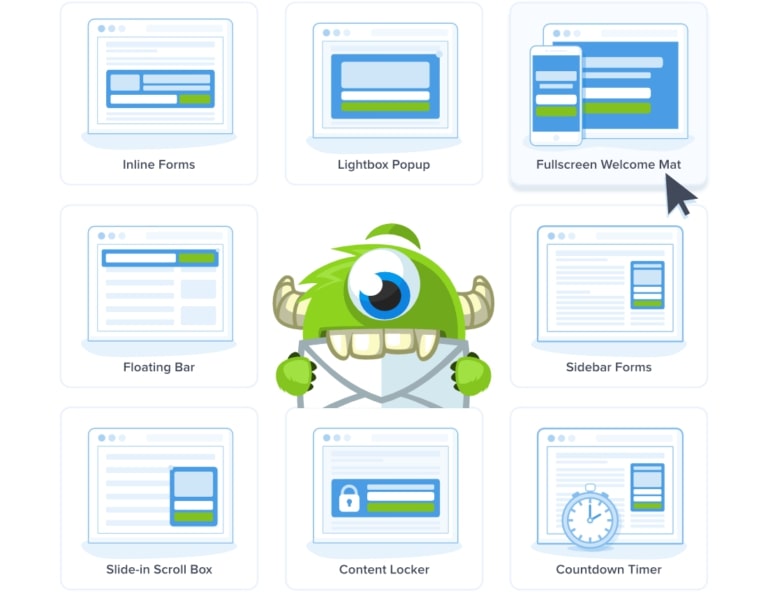
The choice of features isn’t coincidental. OptinMonster is one of the most popular lead generation tools used by some of the Fortune 500 companies. Their software is easily integrated with WordPress and intuitive to use.
Sumo is a great alternative and provides a similar choice of features from within your WordPress dashboard thanks to the dedicated plugin.
Both these tools offer amazing conversion features, A/B testing and built-in analytics.
Popups
Popups have a bad reputation because of their invasive nature over the years, to a point where Google started penalising certain types of popups. It might look like using popups is a bad idea, but in reality, they’re very effective. Research by Sumo shows that the top 10% of highest-performing popups converted at 9.28%, while the average conversion rate was 3.09%.
Love them or hate them, popups work and shouldn’t be overlooked. It’s all about what you have to offer and not the tool you used to make the offer. Popups evolved over the years and come in different flavours these days.
From what’s called a “fullscreen welcome mat” showcased on the OptinMonster graphic above, through
Interactive content
Interactive content is super effective. Because it’s the most engaging type of content, it’s way more likely your visitors will remember the positive experience and come back or even share their personal data with you right away.
There are plenty of ways to engage your visitors and every business should be able to find something that fits their model:
- calculators,
- interactive charts and infographics,
- polls and surveys,
- assessments,
- quizzes.
Interactivity has to go in pair with creativity. The above tools don’t limit you.
Everything can be interactive – your website, a simple report or a case study. If you’re in the e-commerce business, you can make interactive sales brochures, product walk-throughs… the possibilities are endless. As long as it’s engaging and offers value to your visitors, you’re doing it right.
Compared to the “80/20 rule” mentioned above, interactive content works best when you save the promotional part until the end. A product walk-through by default is promotional, but your quizzes, surveys and infographics should offer value above anything else
Blogging
We can’t stress enough the importance of your content. Blogging is another way to generate leads and aside from providing valuable articles to your visitors, it combines a lot of the methods we already mentioned.
Don’t fall into the SEO trap. The days of writing articles full of keywords are long gone. Google focuses on the quality of your posts way more these days.
You still need to optimise your posts for your keyword but never at the cost of value for your readers. Excellent content will provide leads in form of newsletter subscribers.
Your posts are also where you can utilise interactive content ideas listed above. Just like with downloadable content, make sure you’re not serving
Your visitors have the questions and you need to not only have the answers but also to provide them in an appealing manner.
Newsletters
To this day, emails are one of the most powerful online marketing tools. A newsletter provides a great way to not only generate new leads but also to nurture existing subscribers.
There are no drawbacks to offering a free newsletter on your website and it’s a great start for lead generation, although it’s not for everyone. The main takeaway is this: don’t flood your newsletter with self-promotion.
Most of your newsletter should be educational and offer value to your subscribers. Many marketers quote the “80/20 rule” as the sweet spot for educational to promotional content ratio.
Newsletters are also a great platform for important company announcements and exclusive offers. If your newsletter is purely promotional, it’s deemed to end up in the spam inbox.
At the end of the day, it’s all about content quality – not only for your newsletter but also your entire site.
Downloadable content
Have you ever exchanged your email for a PDF or an e-book? We sure did and some of these materials were so in-depth that we continuously use them instead of Google! Once again, it comes down to the value of your content
Tread carefully and consider the amount of effort that goes into creating an exceptional guide. It has to be 100% educational and appealing to your visitors.
Be descriptive and don’t
The difference between collaboration and “design by committee” – FREE PDF
Learn how the perceived collaboration of “design by committee” hurts your website, and what you can do to improve it. We give you immediate access to the PDF – no personal data needed.
Referral programs
Have you ever used a service where inviting a friend was rewarded with a certain amount of credit on the platform for both of you? This model is used by companies like Uber and Dropbox.
In fact, the growth of the latter comes from a referral program. In the early days of the service, Dropbox relied on Google ads but they quickly found out it wasn’t cost-effective for them. Instead, they started offering free service based on a referral program – if you invited a friend, you both gained X amount of Dropbox space. This resulted in a 60% increase in signups.
It’s also
You can manage your referral program with tools like ReferralCandy or InviteReferrals. They offer integration with WordPress, MailChimp and the most popular e-commerce platforms.
Comments section
Most sites will ask for your name and email address for you to submit a comment. It’s mainly a security precaution and a basic spam filter since you want to avoid spam and offensive comments from anonymous users, but you can use it as a lead generation tool – and not only by collecting an email for your mailing list.
Yoast has an amazing little plugin called Comment Hacks. It offers basic customisation for your comments, but the most important feature is the ability to redirect your user to a specific page after they submit the comment.
Usually, after a visitor comments on a blog, they see the same page again. Some may double-check if their opinion got submitted and they’ll most likely leave the page.
What you can do instead is to offer them something in return for their comment after they submit it. They’re clearly interested in your content – take advantage of that! Who knows, maybe they asked you a question that your offer will answer immediately.
If they’re willing to interact with your content, give them more! Perhaps include a newsletter sign up form in there as well, for the same reason – they found something about your content interesting, they might want to stay notified about new articles.
Analytics and A/B testing are the keys to success

You won’t know whether your strategy works without analytics. OptinMonster and Sumo include built-in statistics that help you optimise your campaigns, as well as A/B testing tools. The way these test works is by preparing two versions of a conversion form.
They might change the CTA background colour, rephrase the field names and so on. Some of your visitors will see the “A” version, some will see the “B” version. You’ll get in-depth statistics on the effectiveness of both forms that will help you decide in which direction you should go.
Everything you do affects your lead generation
With the conclusion of our list, we want to highlight one important thing – everything you do affects your ability to generate leads.
Your brand’s image, presence on social media, the design, features and performance of your website – if any of these things doesn’t cater to the needs of your visitors, you’re losing potential leads.
Social media and immediate interaction with companies are extremely important to the clients. Including a live chat option and social
We designed our guide to showcase the most effective techniques for lead generation but all pieces of the puzzle need to fit for any method to work.
Avoid SEO mistakes with our FREE PDF
Sign up for our newsletter and get immediate access to “Outdated SEO Practices Marketers Should Avoid”, which includes a quiz to test your knowledge of SEO basics.
Originally published Oct 11, 2018 9:09:51 AM, updated June 2 2023.

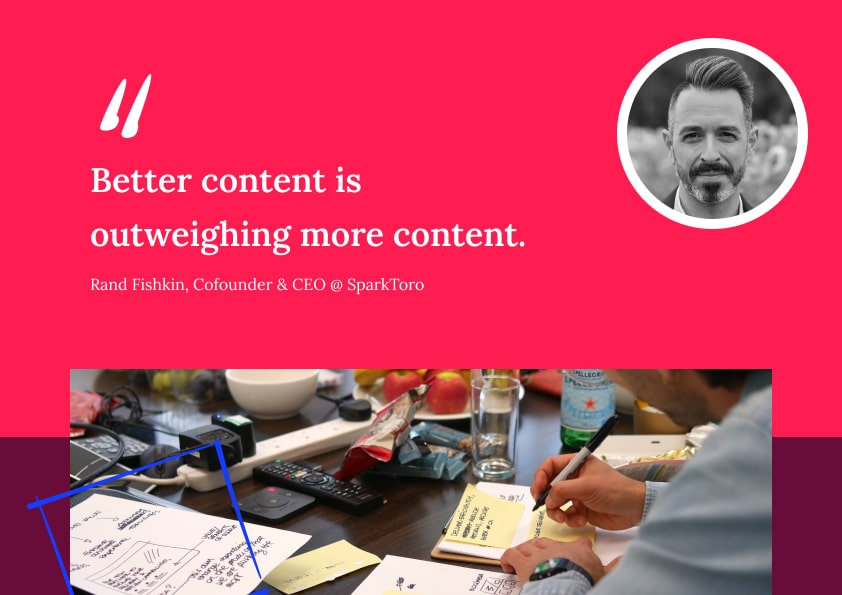
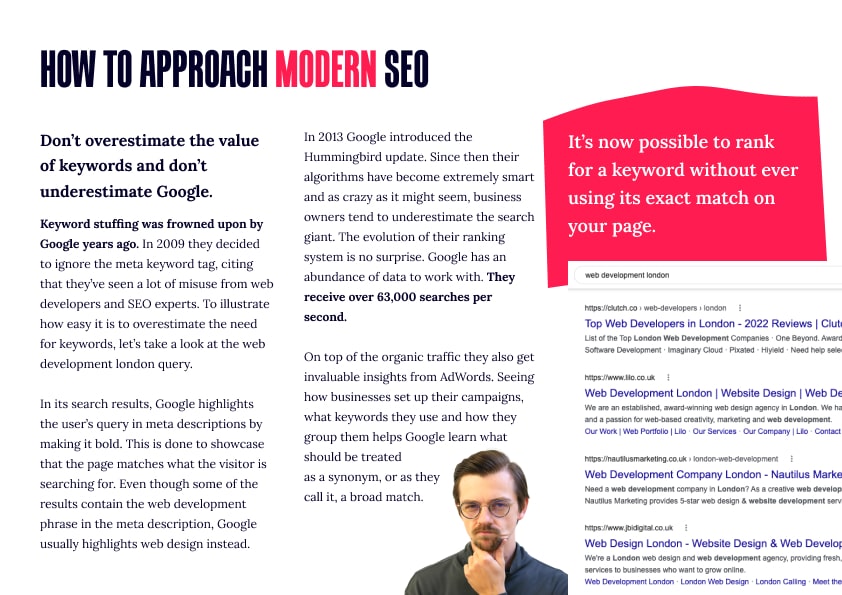
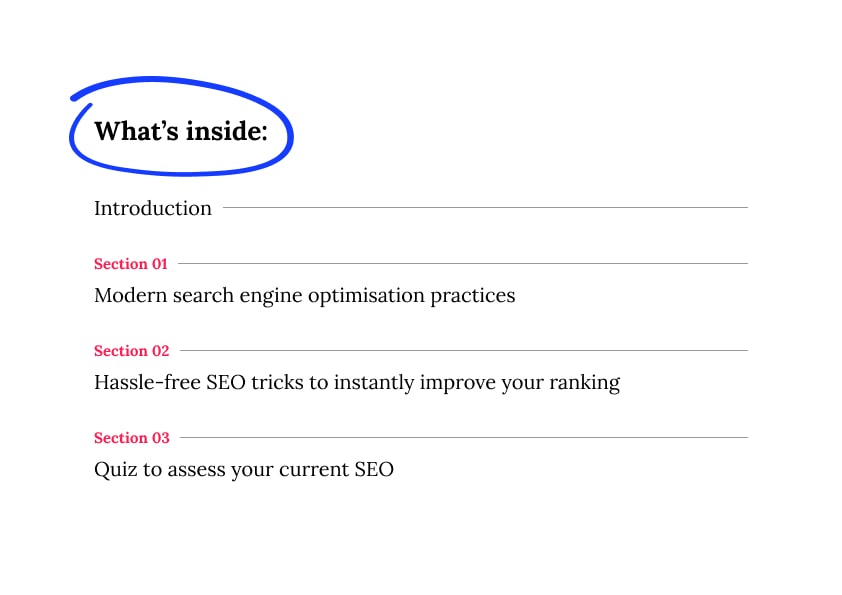



Join the conversation
Looking to share your feedback and join in on the conversation?